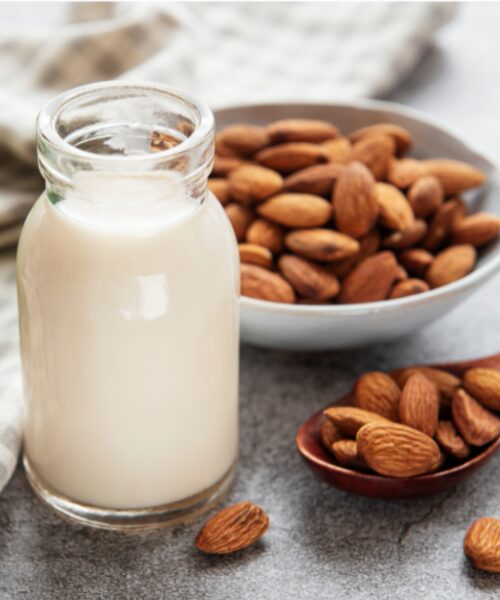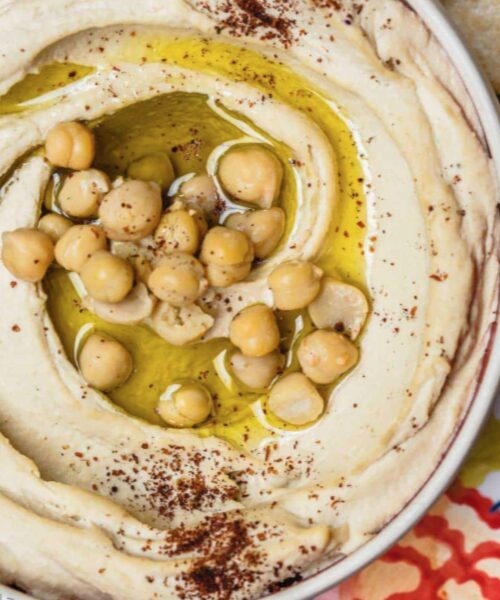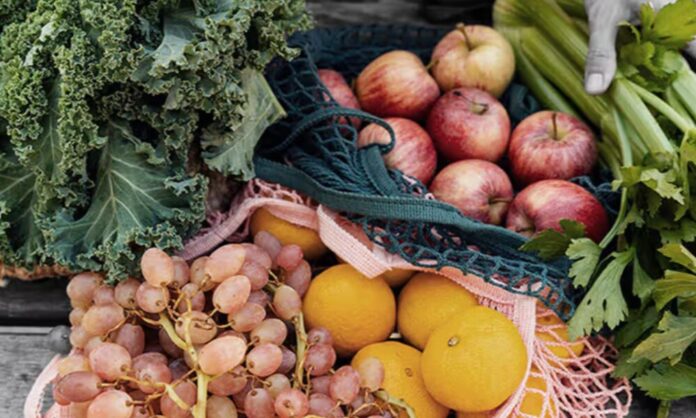The myth of high-protein foods often comes from assumptions or outdated beliefs. For example, people might assume that foods like broccoli or peanut butter contain much protein because they’re promoted as superfoods. However, while these foods are nutritious, their protein content isn’t as high as many believe. On top of that, some foods gain a reputation for protein simply because they are plant-based or nutritious in other ways. Here are 9 examples of such foods:
1. Almond Milk

Almond milk is a popular dairy-free alternative, but it’s not as packed with protein as people think. One cup typically has only around 1 gram of protein. Whereas a cup of almonds has 20 grams. If you’re looking for plant-based milk with more protein, try soy milk, which has around 7 grams per cup.
2. Peanut Butter

Peanut butter has a bit of protein (about 7 grams in two tablespoons), but it’s mostly known for its high-fat content. While it’s a tasty way to add protein to snacks, peanut butter is also calorie-dense, so it’s best to use it in moderation rather than counting on it as a primary protein source. Consuming it extensively will only up your calorie count.
3. Quinoa
Quinoa is celebrated as a superfood because it contains all nine essential amino acids. However, it only has about 8 grams of protein per cup cooked. This is relatively low compared to other protein-rich grains. Quinoa is a great part of a balanced diet, but don’t expect it to cover your protein needs entirely.
4. Broccoli
Broccoli is a nutrient-dense vegetable and does contain some protein, but only 3 grams per cup. It’s great for fibre, vitamins, and antioxidants. Adding other high-protein veggies like peas or leafy greens can help boost your intake without relying too heavily on broccoli.
5. Avocado

Despite popular belief, avocado is also not as much a superfood as we think it is. Avocado is creamy, versatile, and full of healthy fats, but protein? Not so much. A whole avocado only contains around 3 grams of protein. It’s wonderful for heart health and delicious in sandwiches, but it won’t help you reach your protein goals.
6. Hummus

Since hummus is made from chickpeas, which are high in protein, so is hummus itself. A serving of hummus typically has only about 2 grams of protein. It’s tasty and satisfying, but for more protein, consider eating whole chickpeas instead.
7. Spinach

Spinach is often advertised as a protein-rich leafy green, and while it has some protein, you need to eat a lot to get a meaningful amount. It is better for iron intake than it is for protein. One cup of raw spinach contains only about 1 gram of protein, so try pairing it with higher-protein foods in salads, like nuts or seeds.
8. Potatoes
Potatoes have a small amount of protein, around 3 grams in a medium potato, but are mostly made up of carbs. They’re filling and nutrient-rich, but if you’re seeking protein, consider having them on the side with a source like beans or lean meat.
9. Kale
Kale has a reputation as a superfood with everything you need. However, its protein content is modest at about 2.9 grams per cup. While it’s packed with vitamins, antioxidants, and fibre, kale alone isn’t going to provide the protein boost you may be looking for.
These foods are perfect for your fitness goals. They’re packed with antioxidants and nutrients. However, if you’re looking to meet your protein goals daily, you should consider alternatives.
stay tuned to Brandsynario for more news and information.










































